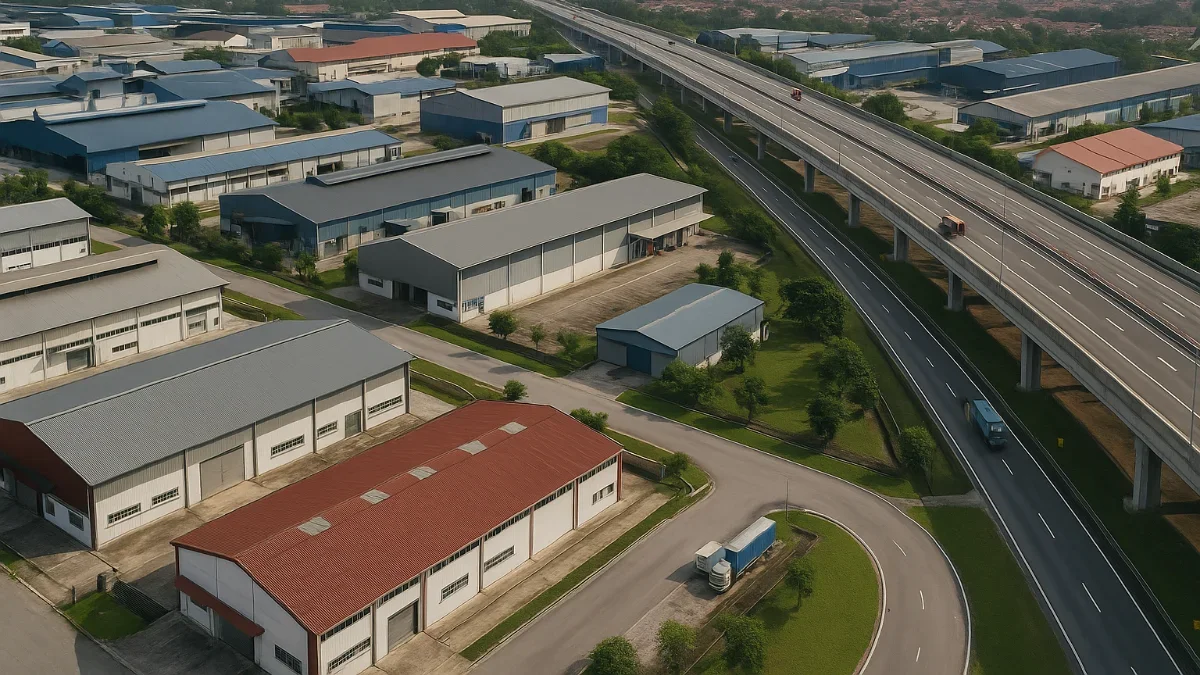Explore the key drivers influencing industrial land prices in Malaysia, including location, zoning, infrastructure access, and market demand.
Whether you're looking to purchase industrial land or assess the value of your existing property, understanding what affects land prices is key. In Malaysia, industrial land values vary greatly by location, infrastructure, and zoning. Here are the top factors influencing industrial land prices in 2025 and beyond:
1. Location & Accessibility
Location remains the most critical factor. Proximity to highways, ports, airports, and urban centers increases desirability and price.
High-value zones:
Port Klang (Selangor)
Kulai, Pasir Gudang (Johor)
Batu Kawan (Penang)
Nilai, Sendayan (Negeri Sembilan)
2. Infrastructure & Utilities
The availability of power supply, water, sewerage, gas, and broadband connectivity significantly impacts land value. Parcels with ready infrastructure command higher prices.
Bonus: Proximity to logistics hubs or rail links like the ECRL corridor increases value.
3. Zoning & Land Use Category
Lands must be zoned "Industrial" (Perindustrian) to be used for factories or warehouses. Lands with pre-approved zoning are more expensive than those needing conversion.
Types of zoning:
Light industrial
Heavy industrial
Hi-tech or specialized zones
4. Freehold vs Leasehold Title
Freehold industrial land is scarce, especially in key states like Selangor and Penang. Because of its permanence and fewer restrictions, freehold plots are usually 20%–30% more expensive than leasehold ones.
Leasehold with short balance (e.g., < 60 years) tends to see price stagnation unless premium is paid to extend lease.
5. Land Size & Shape
Larger plots (5–10 acres and up) are in high demand by logistics and manufacturing giants. However, irregular shapes, slope issues, or narrow frontages may reduce valuation.
Preferred features:
Flat terrain
Wide frontage
Good road access
6. Surrounding Developments & Demand
Being near industrial parks, ports, or major factories can push land prices up. Clusters often attract supporting industries (e.g., logistics, cold-chain, warehousing), increasing demand and price.
Example: Land near Tesla or semiconductor plants in Penang or Johor sees faster appreciation.
7. Government Plans & Economic Corridors
Inclusion in government plans like the Malaysia Vision Valley (MVV), NCER, Iskandar Malaysia, or along the ECRL will increase land potential and value over time.
Tip: Study local structure plans (RT/Draf Rancangan Tempatan) and state investment blueprints.
Conclusion:
Industrial land prices in Malaysia are shaped by a combination of location, infrastructure, zoning, title status, and future development potential. Understanding these factors helps buyers make smart decisions and allows current owners to unlock land value strategically.
Contact us Call Kenneth 017-380 9993 Or WhatsApp our team directly for the latest availability



